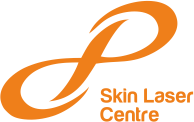Q-switched lasers have become a popular tool in dermatology for treating various skin conditions. Unlike continuous wave lasers, these innovative devices deliver ultra-short bursts of high-intensity light.
This precise targeting allows them to address specific concerns without damaging surrounding tissues. But Q-switched lasers offer more than just basic treatments.
Let’s delve into advanced techniques that unlock their full potential for rejuvenating and restoring your skin.
Understanding the Power of Wavelengths:
Q-switched lasers come in various types, each with a specific wavelength of light. This wavelength determines what the laser targets in the skin. Here’s a breakdown of two common types:
- Nd:YAG Laser: This versatile laser emits two key wavelengths: 1064nm and 532nm. The longer 1064nm wavelength is ideal for reaching deeper into the skin, making it suitable for treating pigmented lesions like birthmarks and stubborn sunspots. The shorter 532nm wavelength is better absorbed by melanin, the pigment in skin, making it effective for removing freckles, age spots, and even tattoo ink.
Advanced Techniques for Targeted Treatments:
With growing expertise, dermatologists are now using Q-switched lasers in more sophisticated ways to address various concerns:
- Fractional Photothermolysis for Rejuvenation: This technique involves creating microscopic columns of treated tissue within the skin. The laser beam breaks down targeted areas, stimulating collagen production for firmer, smoother skin. This approach is helpful for reducing wrinkles, fine lines, and improving overall texture.
- Toning and Tightening: Lower-fluence settings on the Q-switched laser can be used for skin tightening. The laser energy gently heats the deeper layers of the skin, prompting collagen renewal without damaging the surface. This can improve skin elasticity and give it a more youthful appearance.
- Scar Reduction: Acne scars and surgical scars can be improved with fractional Q-switched laser treatments. By targeting specific areas within the scar tissue, the laser encourages collagen production, leading to a smoother, even skin surface.
- Melasma Management: Melasma, characterized by patchy brown discoloration on the face, can be challenging to treat. However, Q-switched lasers offer promise. With precise targeting of melanin-laden cells, the laser can lighten these patches and achieve a more even skin tone. However, it’s crucial to remember that multiple sessions and strict sun protection are essential for optimal results.
Optimizing Treatment for Your Needs:
The key to successful Q-switched laser therapy lies in customization. A dermatologist will assess your specific skin concern, skin type, and desired outcome to create a personalized treatment plan. Here’s what you can expect:
- Pre-treatment Consultation: This discussion will involve a detailed evaluation of your skin, medical history, and expectations. The doctor will explain the procedure, potential side effects, and recovery time.
- Tailored Parameters: Depending on your concern, the laser settings like wavelength, fluence (energy delivered), and pulse duration will be adjusted to achieve optimal results with minimal risk.
- Multiple Sessions: Most conditions require multiple treatment sessions spaced several weeks apart to allow for skin healing and collagen regeneration.
Considerations and Aftercare:
While Q-switched laser therapy is generally safe, some potential side effects exist like redness, swelling, and temporary lightening or darkening of the treated area. Here’s how to ensure a smooth recovery:
- Sun Protection is Paramount: Following treatment, especially when targeting pigmentation, strict sun protection is crucial to prevent hyperpigmentation. Regularly apply sunscreen with SPF 30 or higher and minimize sun exposure.
- Moisturize Regularly: Proper hydration helps the skin heal and prevents dryness. Use a gentle, fragrance-free moisturizer as recommended by your dermatologist.
- Makeup on Hold: Avoid applying makeup directly on the treated area for at least 24-48 hours to allow the skin to heal.
Things to Consider in Q-Switched Laser Therapy
Q-switched laser therapy offers significant benefits for various skin concerns. However, it’s important to maintain realistic expectations. Here are some key points to remember:
- Results Take Time: Skin regeneration is a gradual process. Improvement will become more noticeable over several weeks following treatment.
- Multiple Sessions Might Be Needed: Depending on the severity of your condition, achieving optimal results may require multiple treatment sessions.
- Maintenance Might Be Necessary: For certain concerns like wrinkles or sun damage, occasional maintenance sessions might be needed to sustain the results.
Consult a Qualified Dermatologist:
For safe and effective Q-switched laser therapy, consulting an experienced dermatologist is crucial. They possess the expertise to assess your skin, determine the most suitable treatment approach, and manage potential side effects.
In conclusion, Q-switched laser therapy has evolved beyond its basic applications. With advanced techniques and customized treatment plans, dermatologists can now address a wider range of skin concerns, from wrinkles and scars to stubborn pigmentation.
While realistic expectations and proper aftercare are essential, Q-switched lasers offer a powerful tool for achieving a clearer, smoother, and more youthful complexion.
Emerging Technique in Q-Switched Laser Therapy
The world of Q-switched lasers is constantly evolving. Here’s a glimpse into some exciting potential applications on the horizon:
- Vascular Lesions: Researchers are exploring the use of Q-switched lasers for treating vascular lesions like spider veins and rosacea. By targeting specific blood vessels, the laser could potentially eliminate these unwanted blemishes with minimal downtime.
- Stretch Mark Reduction: Stretch marks can be a concern for many people. Q-switched lasers hold promise for improving their appearance. By stimulating collagen production and restructuring the dermis, the laser might help reduce the visibility of stretch marks.
- Tattoo Removal Advancements: While Q-switched lasers are already used for tattoo removal, advancements in technology are leading to more efficient and faster removal processes with minimal scarring. New wavelengths and pulse durations are being explored to target different types of tattoo inks more effectively.
Final Conclusion:
Q-switched laser therapy has become a valuable tool in dermatology, offering a minimally invasive approach to address various skin concerns.
With ongoing research and development, we can expect even more innovative applications to emerge in the future.
By harnessing the power of these advanced lasers, dermatologists can continue to provide patients with safe and effective solutions for achieving healthier, more radiant skin.
Book An Appointment













